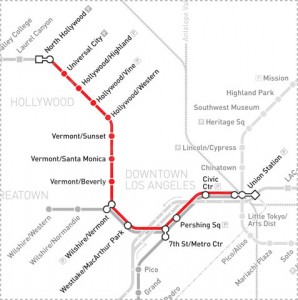
Thanks to funding from the TIGGER Program, a new energy-saving rail technology will make its debut at the Metro Red Line, a heavy-duty transit line run by the Los Angeles County Metropolitan Transportation Authority (LACMTA).
The innovative flywheel-based technology— Wayside Energy Storage Substation (WESS)— will capture the energy normally lost when a train slows or stops at the station.
How does it work? WESS technology uses a flywheel to capture and store the energy that is usually lost to resistors or friction when a train decelerates, and then transfers that energy to a train as it starts or accelerates.
The 2 MW WESS at the Metro Red Line will generate the most energy when rail traffic is at its peak, which is often when the fluctuating cost of electricity is at its highest. Based on the line’s current level of service (an average of 160 departures a day), the anticipated savings are substantial—more than 400 MWh a year.
This recuperation of energy will decrease the amount of electricity that LACMTA purchases from the grid, thus reducing associated greenhouse gas emissions. Reducing emissions is particularly important for LACMTA, because it is located in a non-attainment zone for air quality (i.e., air pollution levels persistently exceed national air quality standards). In addition to saving energy and reducing emissions, the installation will augment the capacity of LACMTA’s traction power system.
While flywheel technology has been demonstrated in other high cycling, heavy-duty applications, this marks its first use in the transit industry in the United States. A successful demonstration at LACMTA will expand the technology’s marketplace potential and help create American jobs.